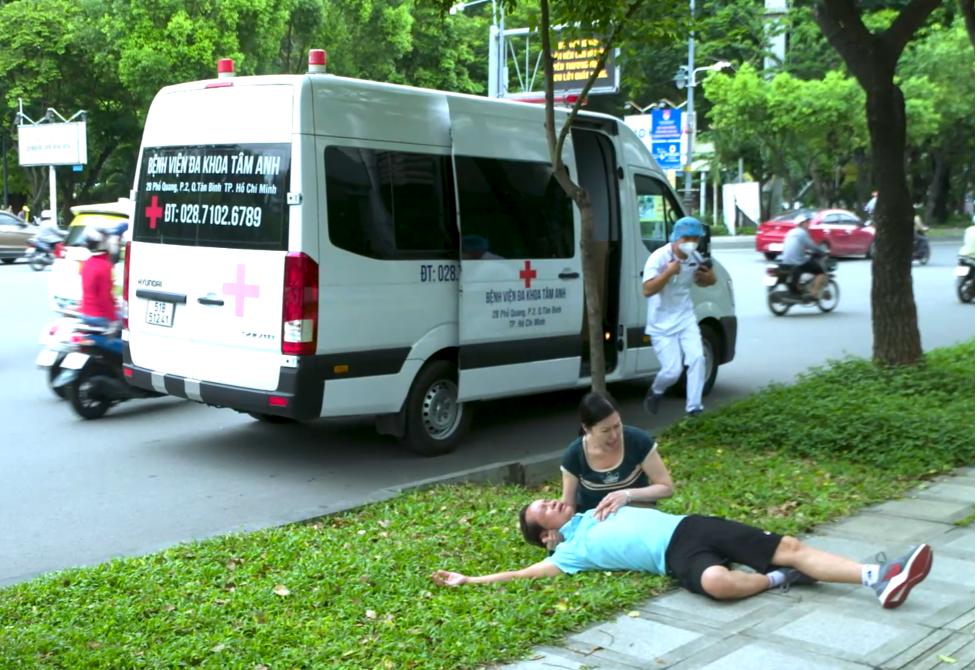Doctor Ly Gia Cuong, from the Emergency Department of Tam Anh General Hospital in Ho Chi Minh City, explains that heatstroke occurs when the body temperature rises above 40°C (104°F), causing severe damage to the brain and internal organs. Heatstroke is not simply fatigue like heat exhaustion but a medical emergency requiring immediate treatment. However, the symptoms of the two conditions are often similar, leading to confusion. Many heatstroke victims don't receive prompt and proper first aid, instead being treated with cold compresses and given water, which can waste crucial time.
Severe heatstroke symptoms include unconsciousness or fainting after outdoor activity, weak or irregular breathing, hot skin with no sweating, rapid or very slow pulse, possible seizures, confusion, and delirium. If you encounter someone with these signs, immediately call emergency services (115). Even without specialized medical equipment or paramedics, proper first aid can significantly improve the victim's chances of survival.
Move the person to a shaded area, remove excess clothing, and pour cool (not ice-cold) water over them while fanning them with your hand or an electric fan. Using a wet cloth to wipe down their body can also help lower their temperature.
 |
Promptly move the heatstroke victim to a shaded, well-ventilated area. Photo illustration: Tam Anh General Hospital. * |
If the victim stops breathing, immediately begin CPR. Lay them on their back on a firm surface, place your hands one on top of the other, and use the heel of your hand to press firmly on the center of their chest at a rate of 100-120 compressions per minute, to a depth of 5-6 cm for adults. Untrained individuals should not attempt rescue breathing, as incorrect technique can be harmful. If you're alone, call emergency services first, then start CPR. Don't leave the victim until paramedics arrive or they regain consciousness.
Doctor Cuong points out a common first aid mistake: trying to give water to a semi-conscious or unconscious heatstroke victim. This is dangerous as it can cause choking and airway obstruction. He advises giving only small sips of cool water or electrolyte drinks if the person is conscious. Simultaneously, wipe them down with a wet cloth, ensure good ventilation, and keep them away from high temperatures. Avoid pouring ice water directly on them or immersing them in cold water, as this can cause vasoconstriction, irregular heartbeat, and worsen their condition.
Some heatstroke victims may experience seizures or lose control. In this case, lay them on their side, support their head to prevent injury, and don't put anything in their mouth as it could obstruct their airway. If they stop breathing, immediately start CPR.
To be prepared for emergencies, Doctor Cuong recommends that people working or spending time outdoors carry a first-aid kit containing electrolyte solution packets or small bottles, cold packs or wet towels, a cooling spray, a mini fan, and fever-reducing medication.
The elderly, young children, individuals with heart conditions or diabetes, obese individuals, and those taking diuretics or sedatives are at higher risk of heatstroke and should be cautious when outdoors. Limit exposure to the sun between 10 a.m. and 4 p.m., and avoid strenuous physical activity in the heat. Wear light-colored, loose-fitting clothing, drink water before, during, and after exercise, and rest to allow the body to recover.
Nhat Thanh
| Readers can submit questions about neurological diseases here for doctors to answer. |












